
Oil and trash cause huge issues in all bodies of water and are some of the most common water pollutants.
©Denise Hasse/iStock via Getty Images
Every year, trillions of gallons worth of pollutants and pounds of trash enter water sources. This includes oceans, rivers, and even local drinking water. It’s important to know the source of these issues as well as the most common water pollutants if you want to be more aware of what’s causing damage to the environment.
Keep reading to learn about the most common causes of pollutants and the pollutants that do the most damage to water systems.
Common Causes of Water Pollutants
There are many ways pollutants enter the water. These are the most common and the ones that deposit the most pollutants every year.
Agriculture

Farms are great ways to produce a lot of food, but they hurt wildlife and water.
©CYJ 360/Shutterstock.com
Agriculture water pollutants are one of the worst problems currently affecting water sources. To keep plans growing happy and healthy, fertilizers, pesticides, herbicides, and fungicides are used in abundance by farmers.
While these help the plants, they contain minerals and chemicals that are bad for water sources, especially in excess. Phosphorus and nitrates are the two most common, but methane and heavy metals are also present.
They don’t only come from sprays and fertilizers. Animals also release a lot of these elements in their waste. When it rains, all of these products get into the groundwater and local water sources, causing issues like increased algae growth and severely reduced water quality.
Fossil Fuels

Cars release a lot of chemicals into the air but some of it enters your local water sources as well.
©jittawit21/Shutterstock.com
Coal, oil, and natural gas are all made from fossil fuels. It’s a non-renewable resource that comes from long-dead and decomposed plants and animals. The high use of fossil fuels has caused enough problems that many people know the danger they pose to the air. However, what people might not realize, is that fossil fuels also pollute the water.
Sometimes, the burning of fossil fuels creates acid rain. Acid rain contaminates water, harming flora and fauna in the area. The chemicals in the rain also feed algae, which may lead to algal blooms.
Oil spills are common, and also cause pollution. Whether it be a truck that breaks down and spills oil in a city or one of the pipes made to transfer oil from one location to another, the result is the same. It does a lot of harm to local wildlife. Animals often end up trapped and injured by the oil. The oil itself, if thick enough, sits on the surface of the water. This blocks out light and oxygen, which hurts wildlife that is caught under the spill as well as the plants unable to move to a place with more light.
Fracking is another issue. Fracking is one of the ways to pull fossil fuels out of the earth. Not only does it use an exorbitant amount of water, but the wastewater at the end is often highly toxic. Some of the chemicals and minerals found in wastewater from fracking include chlorine, mercury, arsenic, and lead. This water not only endangers the environment, but it can contaminate drinking water as well.
Sewage and Wastewater
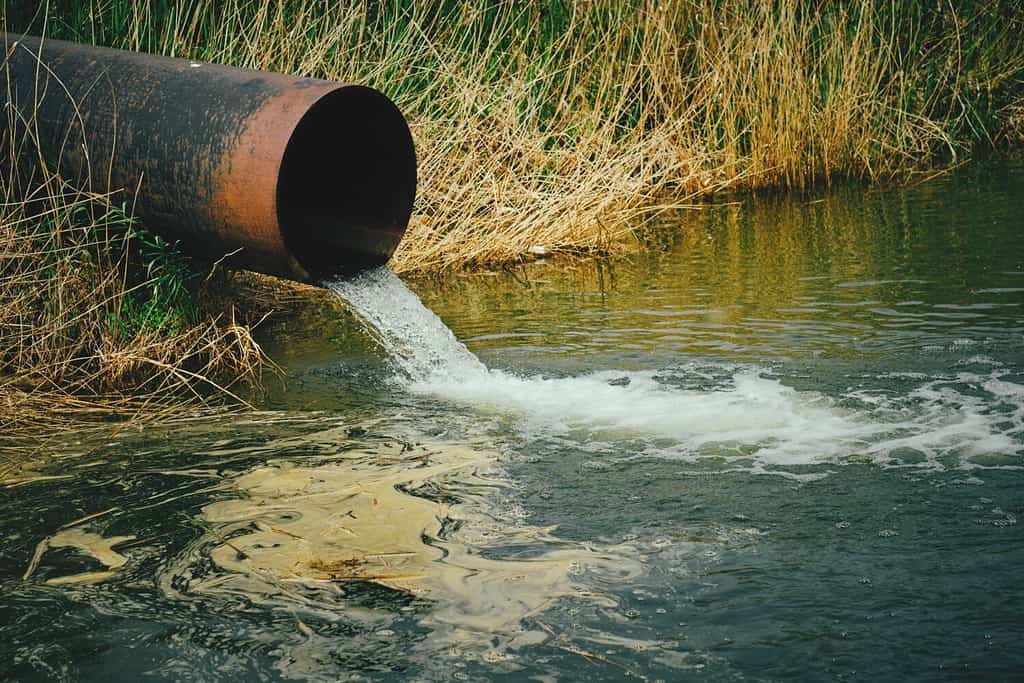
Your sewage and wastewater go right back into local water sources.
©Dmitriy Prayzel/Shutterstock.com
The sewage and wastewater released and leaking back into water sources place a lot of pollutants into the ocean. Sewage contains a diverse number of bacteria. Many of which are harmful to the health of people and animals including E. coli and cholera.
Most wastewater is treated as well, with chemicals that are harmful to the environment and animals. Some examples of chemicals wastewater treatment put in the water before it goes into the seas include chlorine, sulfuric acid, and sodium hypochlorite (also known as bleach).
Wastewater enters the ocean and surrounding rivers and lakes in a few different ways. Some pollution comes from sewage line leaks. A lot of sewage pipes are old and in desperate need of repair. Due to the cost and time that it would take to make these repairs, there’s a lot of damage to both public and private pipes.
It’s not just old sewage pipes that are the problem either. Pipes used to pump in freshwater are usually old and made with lead. This leads to lead contaminating fresh water as well as leaking into the ground and eventually being transported to other water sources.
These pipes leak out untreated waste into the surrounding earth. This eventually gets soaked into the groundwater and makes its way to surrounding bodies of water before eventually reaching the ocean.
Outdated treatment facilities also cause huge issues when it comes to pollution. Sometimes, there’s damage inside the facility that causes leaks, similar to sewage pipes. However, malfunctions and heavy rains that overwhelm the system also lead to high levels of pollution.
Industrial Waste
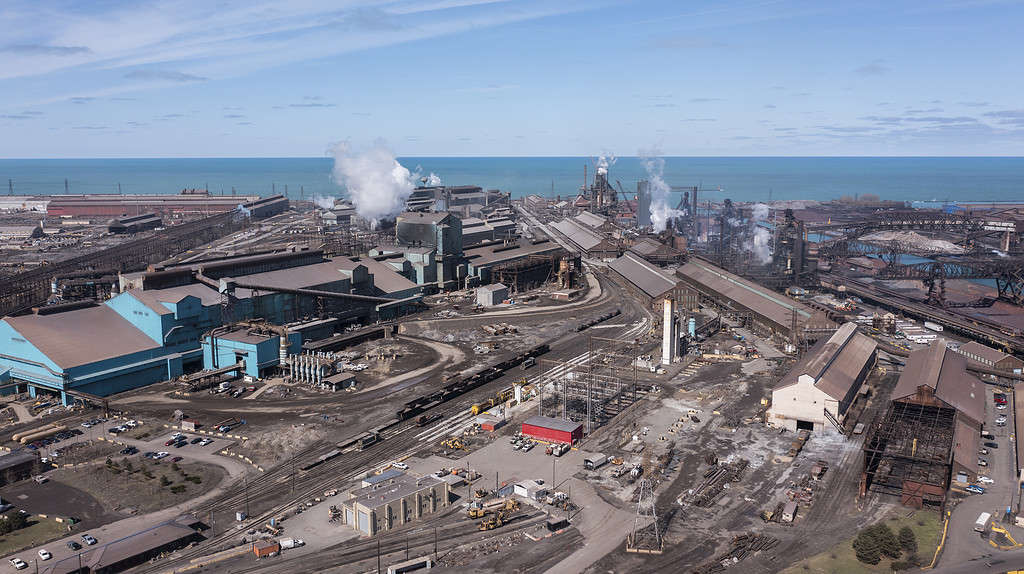
Big industrial facilities release chemicals and pollutants into the air and water.
©MattGush/iStock via Getty Images
Industrial waste is another big cause of contaminants and pollution in water throughout the world. Not only do they release a lot of water pollutants but also all sorts of pollutants, including several dangerous ones in the air.
Some chemicals and health hazards that enter the water from industrial waste include lead, sulfur, mercury, nitrates, and asbestos. These are dangerous chemicals for people, animals, and the environment.
There are laws in place that stop industries from releasing too many pollutants, but it’s not enough to stop them completely, and some loopholes in the law allow them to release more than intended. Some companies choose to ignore the law and pay the fines or risk getting in trouble rather than follow the standards, which causes problems for everyone.
Some industries that release a high level of wastewater include the iron and steel industry, the food industry, textile manufacturing, and pharmaceutical manufacturing.
Runoff
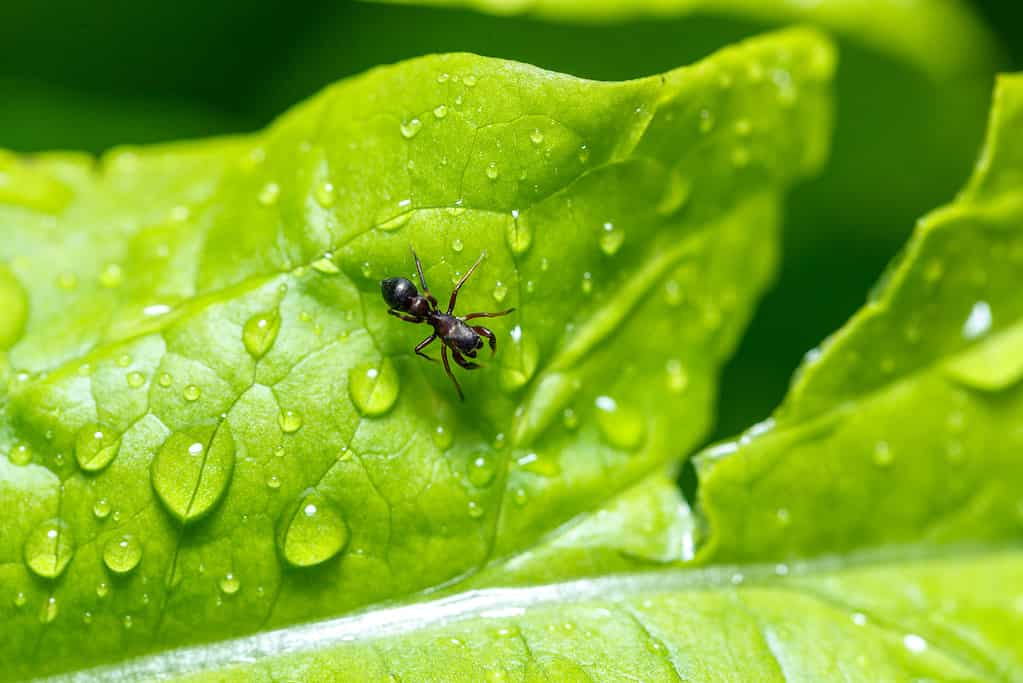
Rain plays its own role in water pollution.
©iStock.com/helen89
One of the common causes of pollutants that is almost impossible to regulate is runoff. Runoff is what happens when rainwater picks up chemicals on the ground and in the groundwater and transports them to other bodies of water.
Anything on the ground, including oil, gas, fertilizers, bacteria, and trash travels straight to the local water source.
Some methods, such as adding netting to the end of sewage pipes, can help catch bigger pollutants, but there’s not currently much that can be done to stop the bacteria and pollutants that are invisible to the eye.
Mining
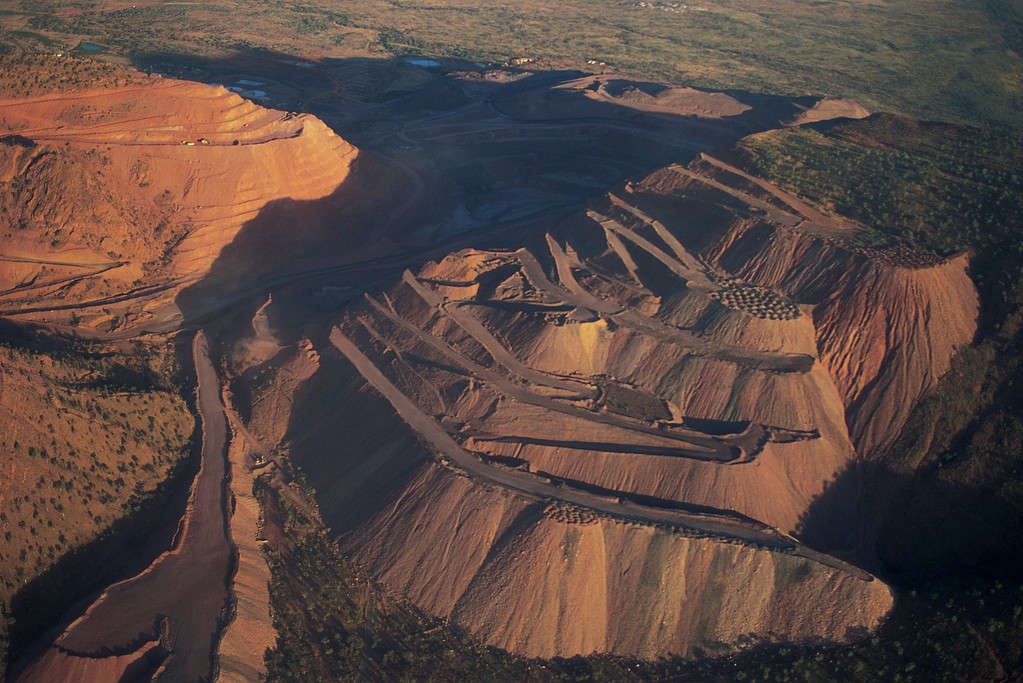
Mining is harmful to much of the environment.
©Comstock/Stockbyte via Getty Images
To separate valuable minerals from regular stone, companies often use harsh chemicals such as sulfuric acid and cyanide. These chemicals soak into the earth. Then, during heavy rain, they soak into the groundwater and make it to other bodies of water.
Sometimes, it’s not necessarily from the mining company that chemicals leach into the soil and water. Rocks naturally have sulfides. During open-pit mining, these sulfides are exposed to air and water, which creates sulfuric acid.
Sulfuric acid isn’t the only pollution that mines release. There’s also a high possibility of heavy metal pollution. These are metals such as cobalt, copper, zinc, cadmium, arsenic, and lead. Some mines release mercury and gold too. These metals are interesting because they don’t harm living organisms when they are just floating around. However, when digested, they are highly toxic.
The problem is that these pollutants stick around for a long time. Even when a mine closes down, it’s normal to see pollutants still in the local water for decades. When the pollutants get into groundwater and local water sources, it’s common to see local animals and plants start dying off. The water also can’t be used for recreation, drinking water, or for industries that need a lot of water to make materials.
This renders the water basically useless, and it will stay that way until something is done to stop more acid and metals from polluting the water sources.
These chemicals and minerals also make it to the ocean, which then kills off coral, local animals, and plants. They also damage very important habitats that are nurseries to many species such as coastal saltmarshes and seagrass beds.
The 7 Common Water Pollutants
Now that you know what the common sources of pollution are, it’s time to learn what the specific pollutants are.
1. Plastic
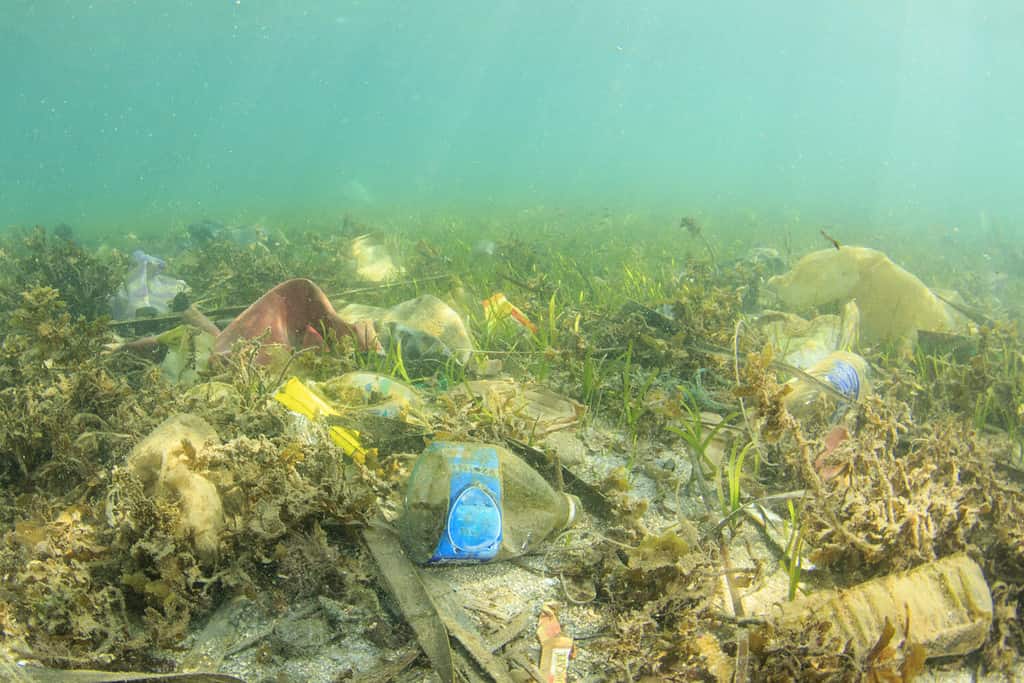
There are many more plastics in the ocean than you can see with your naked eye.
©Rich Carey/Shutterstock.com
Plastic is the most common element in the ocean today. There are even floating islands of solid trash in some parts of the water. The worst part is that there’s a lot more plastic in the ocean than anyone can see. Microplastics, caused by small pieces of plastic as bigger plastic breaks down, are found in almost all water sources.
It’s estimated that over 46,000 pieces of plastic float in every square mile of the ocean. Most of the plastic is microplastics. Somewhere between 15 and 51 trillion particles of plastic particles are floating in the water. This equals somewhere between 205 and 520 million pounds.
Plastics lead to severe problems for marine life. They can smother wildlife and plants. They also can be mistaken for food by wildlife. Since plastics can’t be digested, they sit in an animal’s stomach and prevent them from actually eating nutritious food.
Some plastics, like six-pack rings and straws, lead to further damage to animals that can injure or strangle themselves with the items. It’s thought that by 2050, there will be more plastics than fish in the ocean, based on weight.
2. Phosphorus
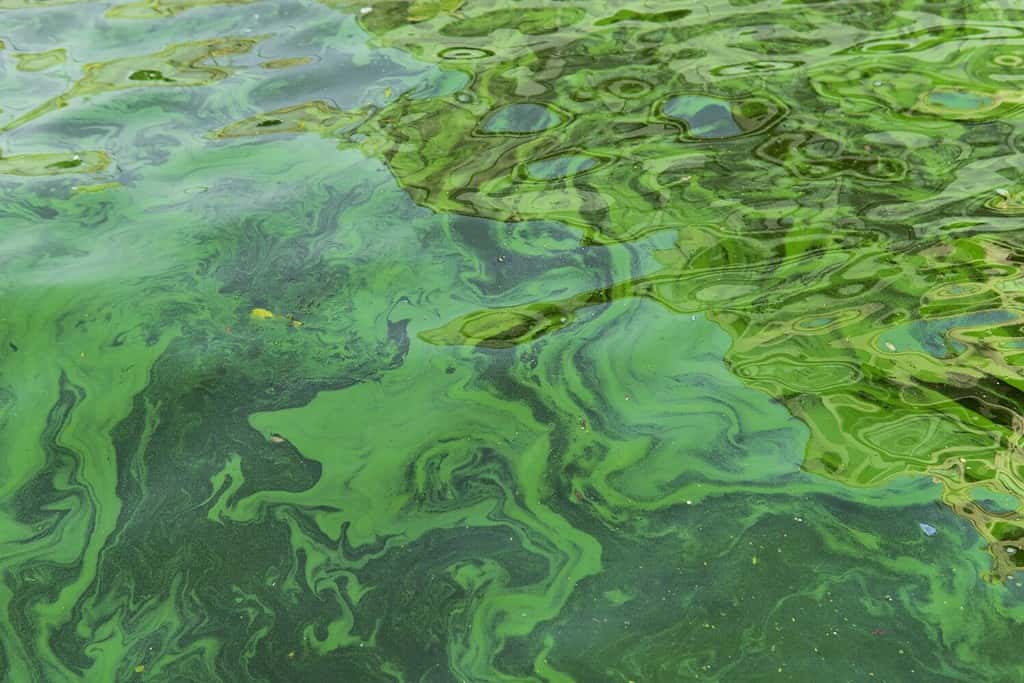
Too much phosphorus causes algal blooms and blocks light into the water.
©Aleksandrkozak/Shutterstock.com
Phosphorus is a natural element found throughout the world. It has many beneficial properties and is essential for plants. However, too much of a good thing still ends up being a bad thing.
When there’s too much phosphorus in a body of water, algal blooms from blue-green algae will pop up. These are dangerous blooms that often make toxins. They also can pose harm even if toxins aren’t present.
If the algal bloom is big enough, it has the potential to draw all of the oxygen out of the water. This leads to something known as a dead zone. These dead zones kill off plants and animals in the area and make a habit unsuitable for any life as there’s no oxygen in them.
Excessive phosphorus comes from farming, especially in the United States. It’s considered to be the biggest source of contamination in moving water like rivers and streams, the second biggest in wetlands, and the third biggest problem in lakes.
The problem is that every time it rains, the fertilizers and pesticides that are on plants and in the soil are brought into the local water source.
3. Nitrates

When there’s no oxygen in the water, fish, plants, and other sea creatures are in danger.
©O partime photo/Shutterstock.com
Nitrates come from a variety of different sources. Fertilizers in farming, golf courses, and yards all get into the water system. Additionally, nitrates can come from sewage and animal waste.
It’s a normal part of everyday life. Many of the foods people eat have levels of nitrates in them, and water often has a low level of nitrates as well.
However, when it’s in excess, it tends to cause problems. If people or animals get too many nitrates, then it has the potential to cause damage to the reproductive and respiratory systems. Spleens, thyroids, and kidneys also experience damage from high nitrate levels.
Adults can handle more nitrates in the body, but children and young animals are at risk of falling severely ill.
Like phosphorus, nitrates also have the potential to cause algal blooms and dead zones. Phosphorus algal blooms and eutrophication (lack of oxygen) is more common in freshwater, while nitrogen and nitrates are the more common cause in oceans.
4. Arsenic
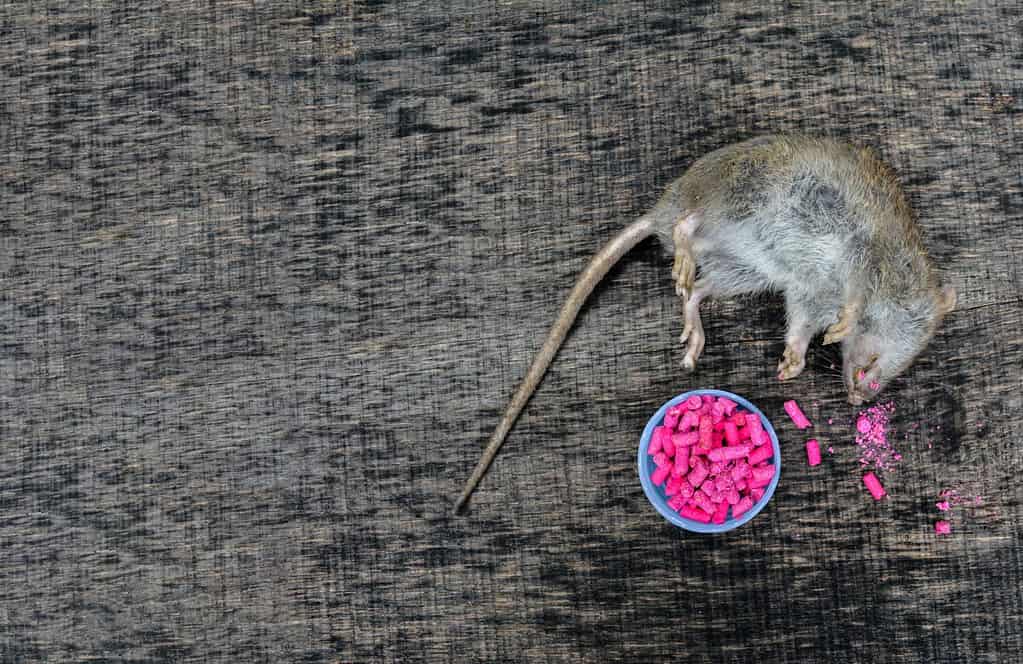
Arsenic is one of the heavy metals used in rat and mouse poison. It’s highly toxic to these rodents, as well as pets and people.
©weha/Shutterstock.com
Arsenic is often found in groundwater. While there’s an acceptable level allowed in water, too much can cause arsenic poisoning. Many countries have seen reports of arsenic poisoning from their drinking water, including the US.
Gold mining is one of the common reasons for arsenic water pollution. This is because arsenic is often found in the same rock as gold. When the ore is broken up to get to the gold, arsenic is released as well, and it leaks out into the nearby water.
Many areas naturally have arsenic in their soil as well. Over time, it can contaminate the groundwater and local water sources for people and animals. The problem with arsenic is that it can take decades to leave the water, and it is very difficult to pull out of water once contamination occurs.
Arsenic has been used to kill animals for centuries because it’s incredibly effective. It can take just a few hours for signs of arsenic poisoning to show after ingesting the heavy metal. Some signs are dehydration, depression, weak pulse, and water diarrhea.
5. Fluoride
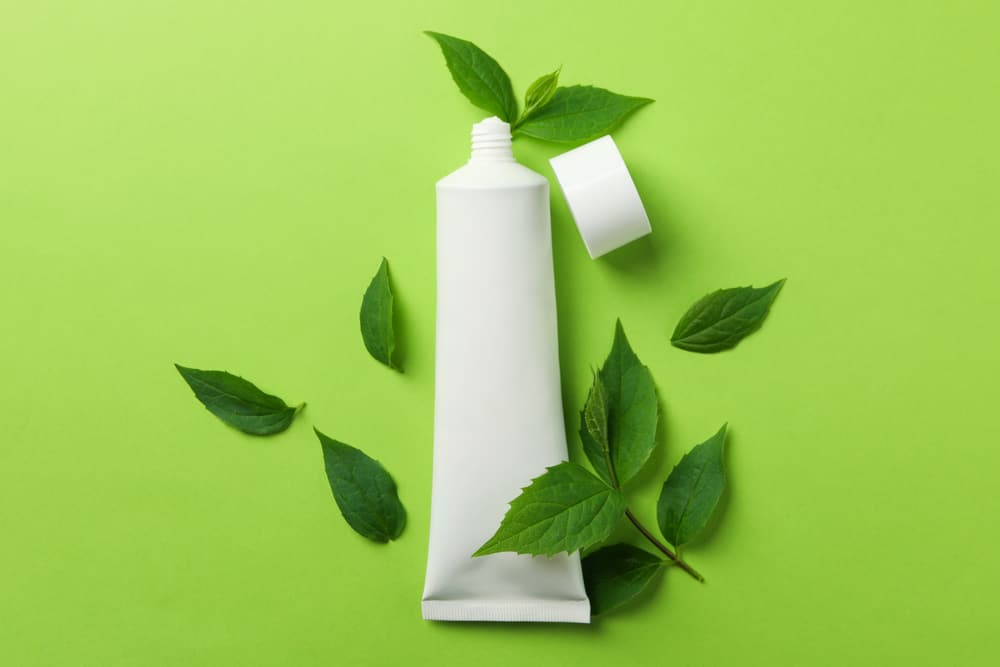
Fluoride is often found in drinking water and toothpaste.
©AtlasStudio/Shutterstock.com
In small doses, fluoride is essential for human health. You may know that it’s regularly added to drinking water and often used at the dentist to help with teeth health.
For a while, everything was thought to be fine. However, studies are starting to come out that too much fluoride is just as bad as too little.
Since fluoride was thought to be good and added to water for human health, not a lot of tests were done on how it impacts wildlife and the environment. Those that were done were short-term studies without any research into how fluoride builds in the environment and the body.
More recent studies have shown that fluoride is incredibly harmful to animals such as bees. In fact, it’s one of the minerals now linked to the high number of bees dying off every year. Farm animals now have several health problems attributed to fluoride. Horses in Texas and Colorado have also started to show signs of severe toxicity symptoms and the links to fluoride toxicity are being studied.
A lot of the pollution came from wastewater. It’s also naturally found in some soil that leaches into water over time.
6. Oil
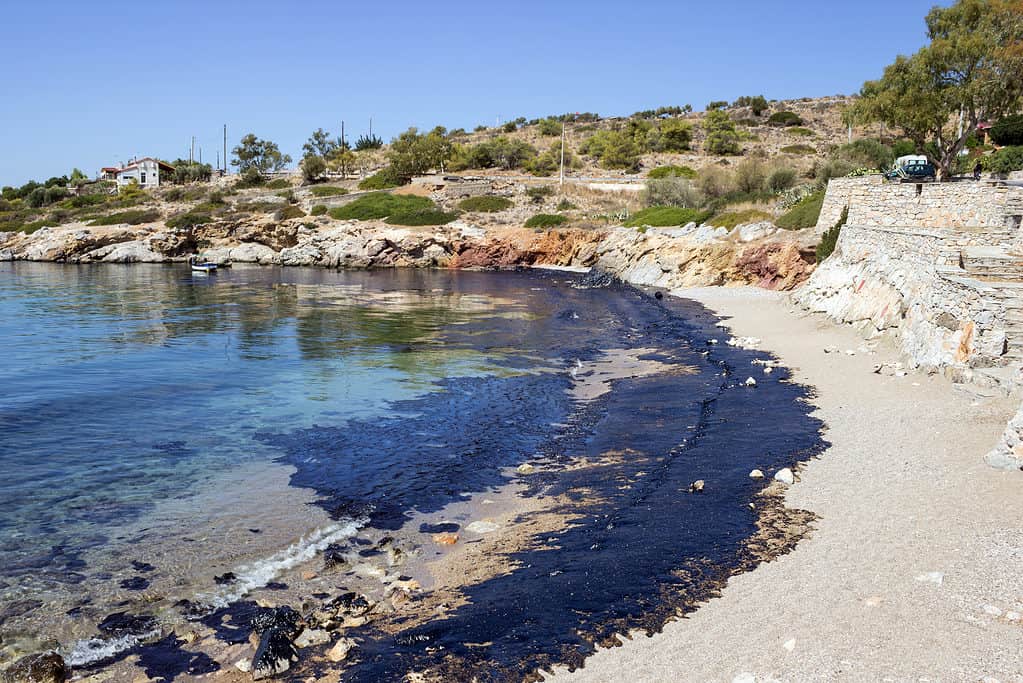
Oil spills devastate local animal populations.
©Korelidou Mila/Shutterstock.com
While oil spills are a big problem, only 12 percent of all oil in the ocean comes from these spills. Much of it instead comes from runoff. As it rains, it picks up oil and other pollutants sitting on the road.
Industrial complexes and unregulated boating activities also play a large part in the total amount of oil in the water. However, the most common reason for the oils in the water comes from improper disposal of oil, such as motor oil and land drainage.
It’s estimated that over seven hundred million gallons of waste oil make it to the ocean every year.
Oil is a huge problem for birds and mammals. It can destroy the natural insulation and water-repelling properties that animals used to living in the water have. This makes it harder for them to dry off and ends up making them more susceptible to predators and diseases.
Animals in the water, like fish and crustaceans, may experience stunted growth, loss of fins, and changes to the liver, reproduction, and heart rates. Oil also harms eggs and prevents hatching.
7. Mercury

Mercury may look pretty, but it’s very toxic to most life.
©iStock.com/ados
Research has shown that mercury enters the ocean from the exchange of gas as well as through pollution from industrial facilities and mining. Legacy mercury, mercury sitting in the soil under the ocean from when people dumped chemicals years and years ago, also plays a huge part in the levels of this toxic mineral people are seeing in the ocean.
If you eat a lot of seafood or are/have been pregnant, you likely know the dangers of mercury. Mercury is a toxic material that builds up in wildlife food chains. So bigger animals that eat other animals in the ocean tend to have a lot of mercury in them. These are animals like tuna, mackerel, or swordfish, which are the ones people most commonly eat.
If you eat too many animals in the ocean, it’s possible to get mercury poisoning. Mercury can cause pain in the hands in feet, muscle weakness, vision problems, and impaired speech, among other issues. Similar problems are seen in animals.
Summary of the Most Common Pollutants in Water
| Number | Pollutant Name | Where it Originates | Dangers |
|---|---|---|---|
| 1 | Plastics | From trash and littering | Starvation, strangulation, suffocation |
| 2. | Phosphorus | From industrial waste and agriculture | Algal blooms, lack of light under the ocean’s surface, lack of oxygen in dead zones. |
| 3. | Nitrates | From farming, gardening, golfing, and sewage | Algal blooms, lack of light under the ocean’s surface, lack of oxygen in dead zones. |
| 4. | Arsenic | Gold mining, naturally in some soil | Poisoning, death, weakness, low body temperature, weakness |
| 5. | Fluoride | Placed into drinking water, found naturally in soil | Death, lethargy, sickness |
| 6. | Oil | Spills, run-off, improper disposal | Hypothermia, lack of light and oxygen in water |
| 7. | Mercury | Legacy from previous generations dumping the mineral, found naturally in the earth, gas exchange | Death, poisoning, and build-up in the food chain |
The photo featured at the top of this post is © iStock.com/pcess609
Thank you for reading! Have some feedback for us? Contact the AZ Animals editorial team.







